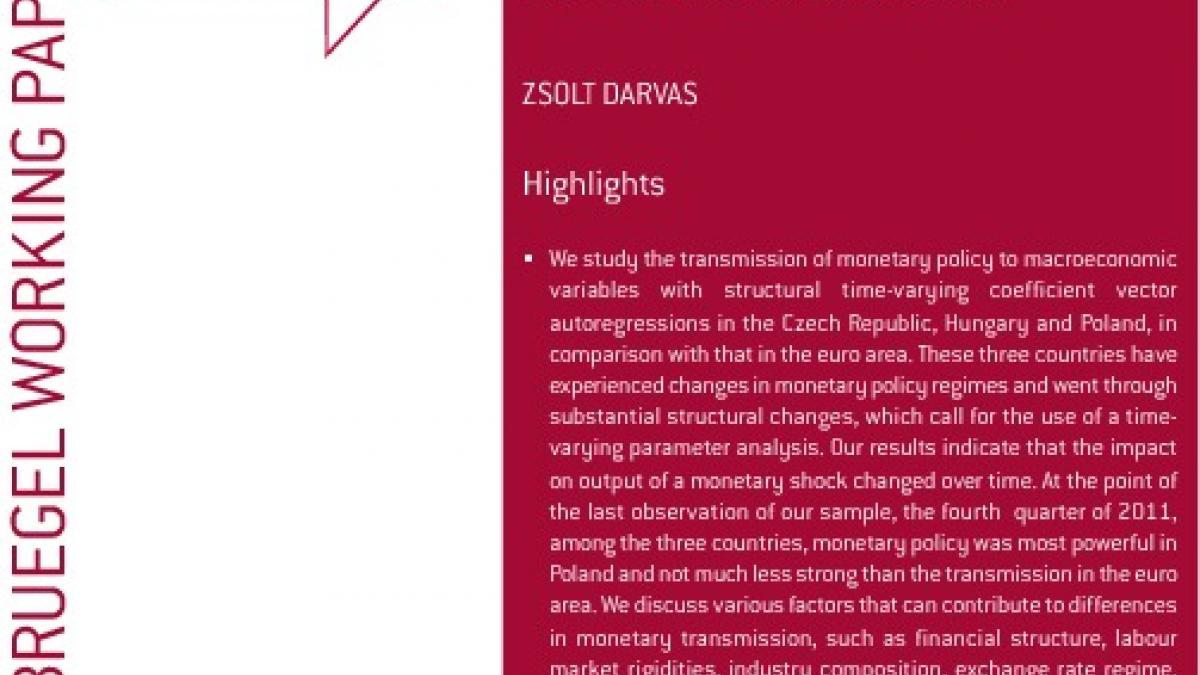Monetary transmission in three central European economies: evidence from time-varying coefficient vector autoregressions
This is a study of the transmission of monetary policy to macroeconomic variables with structural time-varying coefficient vector autoregressions in

We study the transmission of monetary policy to macroeconomic variables with structural time-varying coefficient vector autoregressions in the Czech Republic, Hungary and Poland, in comparison with that in the euro area.
These three countries have experienced changes in monetary policy regimes and went through substantial structural changes, which call for the use of a timevarying parameter analysis. Our results indicate that the impact on output of a monetary shock changed over time. At the point of the last observation of our sample, the fourth quarter of 2011, among the three countries, monetary policy was most powerful in Poland and not much less strong than the transmission in the euro area.
We discuss various factors that can contribute to differences in monetary transmission, such as financial structure, labour market rigidities, industry composition, exchange rate regime, credibility of monetary policy and trade openness.



